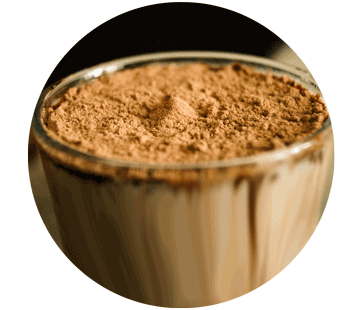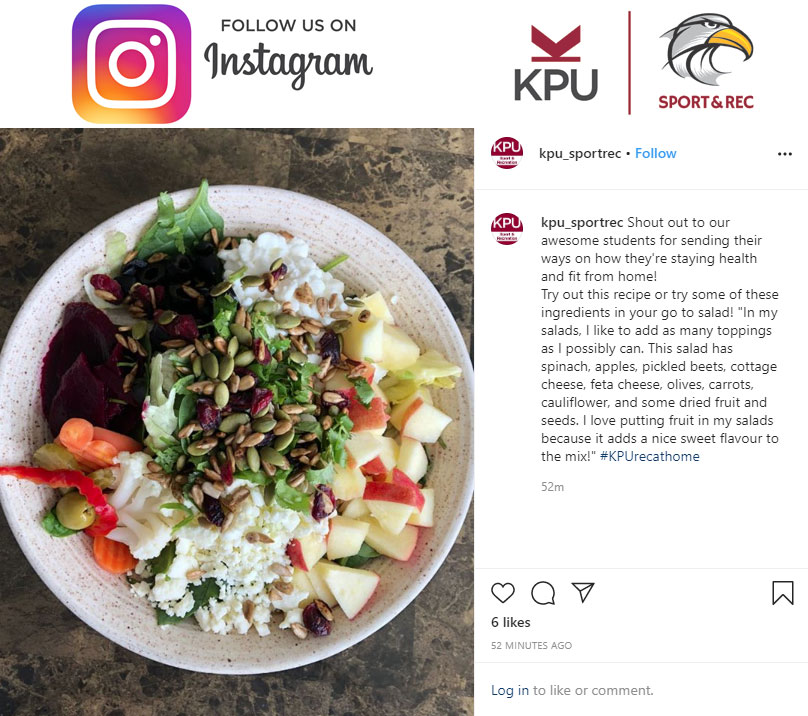Keep your body and soul well fed!
We know that this time can be quite stressful and overwhelming for everyone. You may be doing things differently from your normal routine; perhaps social distancing by yourself has led you to learn how to cook, or maybe you are noticing there are less options at the grocery store as the shelves get emptier and emptier. Many of us are even turning to food as a way to deal with sadness, fear, and boredom.
Whatever the challenge you may be facing, it can make it extremely difficult to focus on nutrition, but it is so important to eat well and nourish not only your body, but your mind too!
Do you have a nutrition question and you just can't seem to find the answer? Ask us! Submit your question to sportrec@kpu.ca and have your nutrition questions answered by a Registered Dietitian!
* Please note that we will answer as many questions as we can and share the most relative questions and answers for our KPU community in our upcoming content
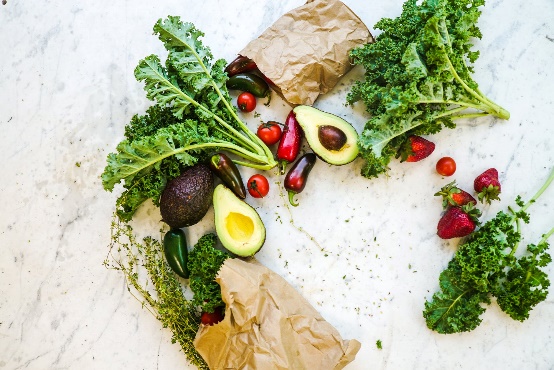
Finding time to make a healthy lunch during a busy day of classes or meetings can be tough. Check out this yummy Avocado, Kale and Quinoa Salad recipe that you can prepare ahead of time and enjoy throughout the week. It’s packed with lots of healthy carbs, fats and proteins, so it will be sure to keep you full until dinner!
Avocado, Kale and Quinoa Salad Recipe from: Cookspiration - Dietitians of Canada
Cook Time: 25 minutes
Prep Time: 15 minutes
Makes: 4 servings
Ingredients
- 2 large avocados, seeded, peeled and chopped
- 1 cup quinoa, uncooked (or rice)
- 2 cups water
- ¼ cup olive oil
- 2 tbsp. balsamic vinegar
- Zest of 1 lemon
- 1 tbsp. lemon juice, fresh
- 1 tsp Dijon mustard
- ¼ tsp sea salt
- 3 cups kale, chopped
- 1 can black beans, rinsed and drained
- 1 can sweet whole kernel corn, drained
- 1 lime, cut into wedges
Instructions
- Rinse quinoa in a mesh strainer under cold, running water for several minutes.
- Add the rinsed quinoa, water, and salt to a medium pot. Bring it to a boil, and then reduce to low heat and cover. Gently simmer the quinoa for 15 minutes.
- Remove quinoa from heat, and let stand for 5 minutes (cover on) until all remaining water is absorbed. Remove cover and gently fluff the quinoa with a fork. Set aside to cool.
- Add olive oil, balsamic vinegar, lemon juice, lemon zest, Dijon mustard, and salt to a small mixing bowl. Whisk all ingredients together until combined. Set aside.
- In another larger bowl, combine cooked quinoa, kale, black beans, corn, and avocado.
- Add the dressing and mix together gently. Garnish with lime wedge and enjoy! The salad can be enjoyed warm or chilled.
Provided by KPU Student Health Promotion

Check out the following CampusWell article that provides you with tips on how to eat healthy when you have night classes. The good news is there are virtually infinite ways to make healthy dinner choices, whether you’re in class or not. To read the full article, visit:
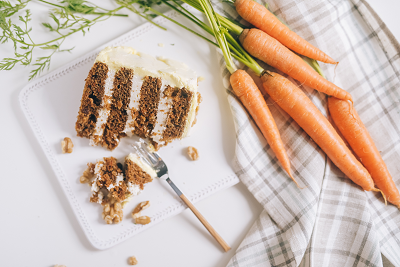
March is Nutrition Month, and to celebrate, we wanted to share one of our favorite family recipes! A major part of this year’s Nutrition Month theme focuses on how culture, food traditions and personal choices can influence what healthy eating means to you. In my family, all of our celebrations and gatherings included food. It is important to me that I enjoy foods that connect me to my family and family traditions. If you would like individualized advice about nutrition, dietitians will work with you to incorporate your values, beliefs and choices into a sustainable plan because they understand the importance of culture and food tradition for our overall health and wellbeing.
Mom’s Carrot Cake
This recipe makes 1 cake in an 8x8 baking dish
Ingredients
Carrot Cake
- 1 cup, white sugar
- 1 cup, vegetable oil
- 2 eggs
- 1 ½ cup white flour
- 1 1/3 tsp baking powder
- 1 1/3 tsp baking soda
- 1 1/3 tsp cinnamon
- ½ tsp salt
- 2 cups, peeled and grated carrot
Cream Cheese Icing
- 2 cups, icing sugar
- ½ block, cream cheese
- ¼ cup margarine or butter
- 1 tsp vanilla
Instructions
- Preheat oven to 350F and lightly grease an 8x8 baking pan with margarine.
- Add sugar, eggs and oil to a mixing bowl, and beat with a handheld mixer until creamy.
- Gradually add the dry ingredients until the mixture is completely mixed together.
- Gradually add the grated carrots until the mixture is completely mixed together.
- Add cake mixture to greased baking pan, and bake for approximately 1 hour.
- While cake is baking, prepare the cream cheese icing. Add icing sugar, cream cheese, margarine and vanilla to a mixing bowl, and mix with a handheld mixer until fluffy.
- Once the cake is finished, let it cool before icing!
Recipe provided by Student Health Promotion
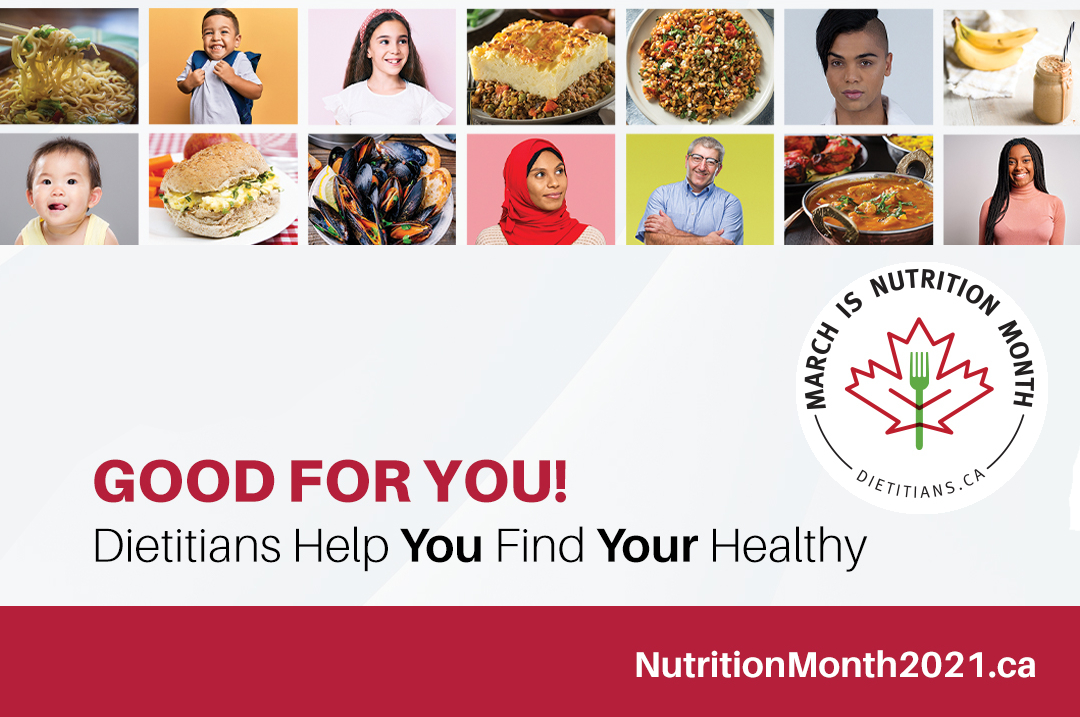
Did you know that every March, dietitians across Canada celebrate Nutrition Month?
What are Dietitians?
Dietitians are regulated health professionals that have specialized education and training focused on food and nutrition. They are required to obtain a 4-year Bachelor of Science degree in either nutrition or dietetics, followed by a dietetic internship or practicum where they receive on the job training for at least a year. Dietitians are also required to be registered with regulatory bodies to ensure they practice ethically and stay up to date with their training. Dietitians stay informed about new research and the science behind food and eating, and are able to translate that information to clients in accessible ways.
Dietitians can work in hospitals, clinics, as part of a team of health care professionals (like doctors, occupational therapists, nurses, etc…), and can also work in less traditional roles, like food service management, post-secondary institutions, non-for-profit organizations, and public health.
Nutrition Month 2021
Dietitians of Canada celebrate Nutrition Month every March. This year’s theme for Nutrition Month 2021 is Good for You: Dietitians Help You Find Your Healthy. Dietitians of Canada acknowledges that there is so much nutrition misinformation in the media, and it can make it hard to understand what it means to “eat healthy”. The good news is that dietitians are the best source of nutrition information! Rather than reading online about a one size fits all diet approach, a dietitian can help you incorporate your individual needs, meet your goals, and “find your healthy”.
A key component of this year’s theme focuses on how culture, food traditions and personal choices can influence what healthy eating means to you. Dietitians will work with you to incorporate your values, beliefs and choices into a sustainable plan because they understand the importance of culture and food tradition for our overall health and wellbeing.
How you can celebrate Nutrition Month?
- Try a new recipe: Check out this FREE electronic recipe book, with 15 yummy recipes that were selected by Registered Dietitians across Canada
- Find a Dietitian
- Engage on Social Media: Check out the hashtag #NutritionMonth to see what others are posting about this month
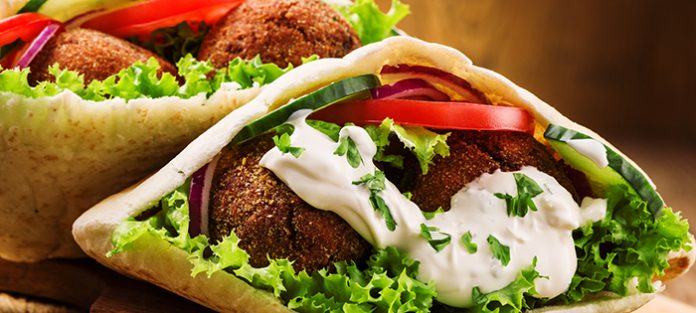
Middle Eastern cuisine is full of fragrant, savoury, and sweet recipes originating from a broad inter-continental region of over 18 nations spanning Western Asia, Turkey, and North Africa. Two popular Middle Eastern dishes that you may be familiar with are falafel and tzatziki. Falafel (or felafel) is a type of patty made with mashed or ground-up chickpeas and spices. Tzatziki is a cold and creamy yogurt-based sauce that is often enjoyed as a dip or a sauce for falafel. These pair well with cucumber, tomato, and spinach, and are also great wrapped up in warm pita bread. Check out this recipe created by Campus Well and try it out today!
Have you ever heard about Vitamin D being referred to as the “Sunshine Vitamin”? We are in the midst of the gloomy and dark winter months here in the Lower Mainland, so it’s important to think about Vitamin D, how much we are consuming, and how much we need. Take a look at the article below highlighting some key information about Vitamin D:

What is Vitamin D?
An essential, fat-soluble nutrient that helps our bodies’ absorb calcium and phosphorus in order to maintain strong, healthy bones and teeth. Vitamin D has also been shown to protect our bodies’ immune systems and help fight against infection and illness.
There are two types of Vitamin D; Vitamin D2 which is made from plants and found in fortified foods that we consume, and Vitamin D3 which is produced by the body.
Where can you find Vitamin D and how much do our bodies’ need?
The Recommended Dietary Intake for healthy adults is 600 IU/day from both food sources and supplements.
Vitamin D is not commonly found in foods but some foods are fortified with it. A few common foods containing Vitamin D are: milk, soy beverages, orange juice, fatty fish, eggs, cheese, and fortified cereals.
If you don’t regularly consume foods that contain Vitamin D, you may benefit from a Vitamin D3 supplement. You should visit your doctor to determine your Vitamin D levels and for recommendations about what supplement to choose.
We can also create our own Vitamin D - when the skin absorbs UVB rays from the sun, a chemical reaction occurs in the body and forms Vitamin D.
Most of the Vitamin D that our bodies’ utilize is produced in the skin, but many people actually have insufficient levels. In 2013, nearly 32% of Canadians had insufficient levels of Vitamin D in their bloodstreams. This can be due to a number of reasons, such as age, location, and even skin tone.
Did you know?
Vitamin D is called the “Sunshine Vitamin” because our bodies can make some Vitamin D when exposed to the sun’s UVB rays. However, this only happens if you don’t wear sunscreen and don’t wear clothes that would cover your skin. Correctly applied sunscreen can actually reduce our bodies ability to absorb Vitamin D by more than 90%.
A variety of beverages are often fortified with Vitamin D, such as milk, soy milk, and even orange juice. For reference, one cup of soy milk contains up to 100 IU of Vitamin D.
If you live in Northern latitudes (like Canada) or places where it is frequently rainy or cloudy (like the Lower Mainland), we can’t make enough Vitamin D for many months of the year because of the amount of UVB light we are exposed to. For many of us, it might be beneficial to consider taking a supplement.
As always, if you are interested in learning more about your Vitamin D levels and if you’d benefit from a supplement, speak with your doctor or a registered dietitian!
References
Dietitians of Canada. (2012). Food Sources of Vitamin D.
Dietitians of Canada. (2019, Sept 8). What you need to know about Vitamin D. Retrieved from Unlock Food: https://www.unlockfood.ca/en/Articles/Vitamins-and-Minerals/What-you-ne…
Harvard T.H. Chan School of Public Health. (2020, March). The Nutrition Source. Retrieved from Vitamin D: https://www.hsph.harvard.edu/nutritionsource/vitamin-d/
Holick, M. F. (2004). Vitamin D: importance in the prevention of cancers, type 1 diabetes, heart disease and osteoporosis. The American Journal of Clinical Nutrition, 362-371.
Statistics Canada. (2015, November). Health at a Glance. Retrieved from Vitamin D Blood Levels of Canadians: https://www150.statcan.gc.ca/n1/pub/82-624-x/2013001/article/11727-eng…
Information provided by KPU Student Health Promotion
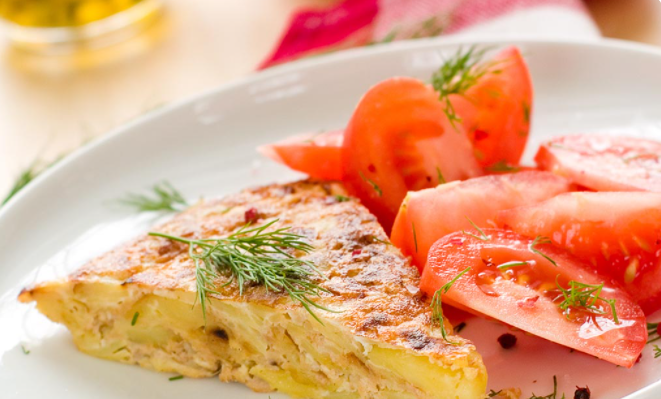
I don’t know about you, but I have a hard time coming up with variety in my breakfasts, and I usually get tired of the same thing over and over again. This unique frittata recipe uses butternut squash which is a delicious winter vegetable that is extremely plentiful this time of year! Try out this recipe for yourself and let us know what you think!
Recipe adapted from: Dietitians of Canada Cookspiration (Denise A. Hartley)
Prep Time: 1 hour
Cook Time: 35-40 minutes
Makes: 12 servings
Ingredients
- 1 butternut squash, peeled and cubed (about 4-5 cups)
- 1 package spinach, chopped (about 300g)
- 1 1 ½ cups potatoes, peeled and cubed small
- ¾ cup red onion, thinly sliced
- 8 eggs
- ½ cup milk
- 1 cup cheddar cheese, shredded
- ½ cup feta cheese, crumbled
Instructions
Roasting the butternut Squash
- Preheat oven to 375OF
- Cut your butternut squash in half, lengthwise, using a sharp sturdy knife
- Scoop out the seeds and stringy pieces and discard
- Peel and cut the butternut squash into small cubes
- Place butternut squash onto a baking sheet with parchment paper, drizzle with olive oil, and season with salt and pepper
- Roast for about 45 minutes, or until squash is soft and tender
Making the Frittata
- Increase oven temperature to 400OF
- Gently stir in the spinach, potatoes and red onion with the cooked butternut squash. Spread out this mixture evenly onto a lightly greased, 9x13 baking dish
- In another bowl, whisk together the eggs and milk. Add salt and pepper to your liking.
- Pour egg mixture over the vegetables and stir gently to distribute. Sprinkle with cheddar and feta.
- Bake in preheated oven for 35-40 minutes or until the eggs are set.
- Enjoy!
Recipe provided by KPU Student Health Promotion
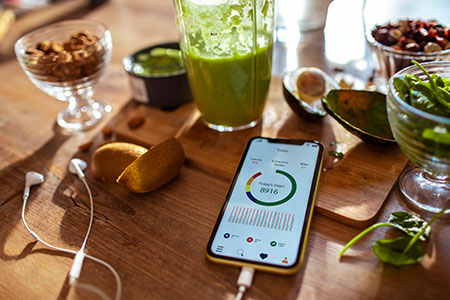
It’s a new year, and some people view this as a time to start achieving new goals, and may have even set a few New Year’s resolutions. As always, there are lots of new diets and weight loss methods out there, but it is important to avoid the latest fad and focus on overall healthy lifestyle changes that can be sustained in the long-term. If you want to start 2021 off on the right foot, here are a few health and nutrition tips from a Registered Dietitian:
- If you’re setting goals for yourself, consider changes that are specific and realistic. You’ll be more likely to achieve your goals if they are clear and something you can actually achieve. These are called SMART Goals (specific, measurable, achievable, realistic, and time bound). For example, a goal of “eating healthier in the New Year” is very broad, and doesn’t give you a lot of context on how you will actually achieve it. On the other hand, a goal of “I will eat 2 servings of fruits or vegetables with breakfast” is specific, it can be measured, and is much more realistic. Once you start achieving these smaller goals, you may feel more encouraged to continue setting goals for yourself. It is also important to reflect on the reason behind why you are setting these New Year’s resolutions.
- Make time for your health and wellbeing in your everyday schedule. If you’re working or learning from home, make sure to take proper breaks and step away from the computer throughout the day. If you have a busy day, try prepping your snacks and lunches just as if you were going to school or into the office. This may help prevent unwanted snacking throughout the day on less healthy options. Another great tip to save time and eat well throughout the week is to meal plan and prep on the weekends. When you have a plan of what you’ll eat every day, you may be less likely to pick up take-out when you can’t decide on what to eat or if you’re working late.
- Find what works for you in terms of exercise and movement. If a goal for you is to increase exercise, that doesn’t necessarily mean you need to hit the weight and cardio machines at the gym. Find what movement makes your body feel good. There are lots of different ways to exercise, like going for a walk, snowshoeing, riding your bike, ice skating, and much more! If you like fitness or yoga classes, our Sport and Recreation department offers them virtually this semester. Check out more information here: https://www.kpu.ca/sportrec/virtual-classes
Information provided by KPU Student Health Promotion
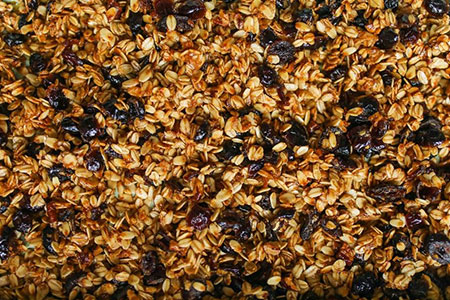
Looking for an easy and delicious DIY gift for the holidays this year? Look no further!
Making homemade granola is an affordable, easy, delicious, and healthy gift idea that you can hand out to your loved ones this year. You can get as creative as you want and add your favorite toppings, like nuts, seeds, and dried fruit. You can also be festive and decorate the jar or bag that you put your granola in. Try out this recipe at home and let us know what you think!
Christmas Granola
Recipe adapted from: Dietitians of Canada Cookspiration (Denise A. Hartley)
Prep Time: 10 minutes
Cook Time: 30 minutes
Makes: about 40 servings
Ingredients
- 5 cups, rolled oats
- 2 cups, barley flakes
- 1 ½ cups, raw unsalted nuts of your choice, chopped
- 1 cup, sesame seeds
- 1 cup, raw unsalted sunflower seeds
- 1 cup, raw unsalted pumpkin seeds
- 1 cup, ground flax seeds
- 1 cup, unsweetened coconut
- 1 cup, skim milk powder
- 3/4 cup, olive oil
- ½ cup, molasses
- ½ cup, honey
- 1 tbsp., ground cinnamon
- 1 tsp, ground nutmeg
- 2 cups, dried fruit of choice
Instructions
- Preheat your oven to 325OF.
- In a large bowl, mix together oats, barley flakes, raw nuts, sesame, sunflower and pumpkin seeds, ground flax, coconut, and skim milk powder.
- In another bowl, combine oil, molasses, honey, cinnamon and nutmeg. Stir liquid mixture into the oat mixture and combine until coated.
- Place mixture evenly on a large roasting sheet or pan and bake in the oven for about 30 minutes, or until golden brown. Stir frequently.
- Once cooled, stir in dried fruit. Divide into portions and store in a cool dry place until you’re ready to enjoy!
Recipe provided by KPU Student Health Promotion

Do you find yourself tired and dragging your feet until you’ve had your morning cup of coffee (or two)? After those first few sips, do you feel yourself starting to perk up and feel more alert? That is because of caffeine! In this nutrition blog post, we are going to discuss caffeine; what it is, what drinks and foods you can find caffeine in, and how it impacts your body.
What is it?
Caffeine is a stimulant, so it stimulates our central nervous system (our brain and nerves) to boost our mood, energy and alertness levels. Many people use caffeine to perk up and stay awake. Caffeine can be found in many popular food and drink products, like coffee, soda, energy drinks and chocolate.
When we consume products that contain caffeine, levels can peak in our bodies anywhere between 15 minutes and 2 hours after consumption. Caffeine can also stay in our systems between 1.5 and 9.5 hours, so no wonder you often hear people saying to avoid caffeine before bed so you can have a deep and restful sleep. Caffeine is also absorbed much faster in liquid form (energy drinks, coffee, soda) than in food as it can be quickly absorbed by the GI tract.
Caffeine exists as a white powder and has the chemical name of 1,3,7 trimethylxanthine. It can be found naturally in foods or synthetically created in a laboratory and added to food products. It is treated and regulated as a food additive under Canada’s Food and Drug Regulations, but there is actually no requirement to identify how much caffeine is actually in those products, so it is important to know what products naturally contain caffeine and those that have caffeine added. Chemically, there is no difference between natural or synthetic caffeine.
What foods/drinks contain caffeine?
A few examples of foods and drinks that contain caffeine include:
- Coffee/Espresso
- Tea
- Energy Drinks
- Soda Drinks
- Chocolate
- Guarana (a plant from Brazil that naturally contains caffeine)
- Yerba mate (an herb from South America that is used to make tea)
- Cold and migraine medications
What is a safe amount of caffeine to consume?
According to Health Canada, for the average adult, a moderate daily caffeine intake is no more than 400mg/day. This level is also not typically associated with adverse side effects. Those who are pregnant, breastfeeding and children have a greater chance of negative side effects from consuming caffeine, so their maximum intake levels are lower.
- Pregnant/Breastfeeding, no more than 300mg/day
- Children 4-6 years old, 45 mg/day
- Children 7-9 years old, 62.5 mg/day
- Children 10-12 years old, 85 mg/day
- Adolescents 13 and older, no more than 2.5mg/kg body weight
According to the Centre for Addiction and Mental Health, the average amount of caffeine consumed by each person in Canada is about 210 to 238 mg per day.
So what does this look like?
To help you understand what 400 mg of caffeine might look like, here are a few examples of foods and drinks, and how much caffeine they contain:
- Brewed Coffee, 8oz/1cup: 135mg
- Espresso, 1.5oz/1 shot: 65mg
- Tea, leaves/bag, 8oz/1cup: 50 mg
- Cola beverage, 12 oz/1 can: 36-46 mg
- Candy, sweet chocolate, 1oz/28g: 19mg
- Unsweetened chocolate (dark), 1oz/28g: 25-60mg
- Coffee-flavoured energy drink, 444mL/1 can: 157 mg
- Fruit-flavoured energy drink, 444mL/1 can: 150 mg
This diagram from the Canadian Beverage Association also shows the amount of caffeine content in a number of popular products:
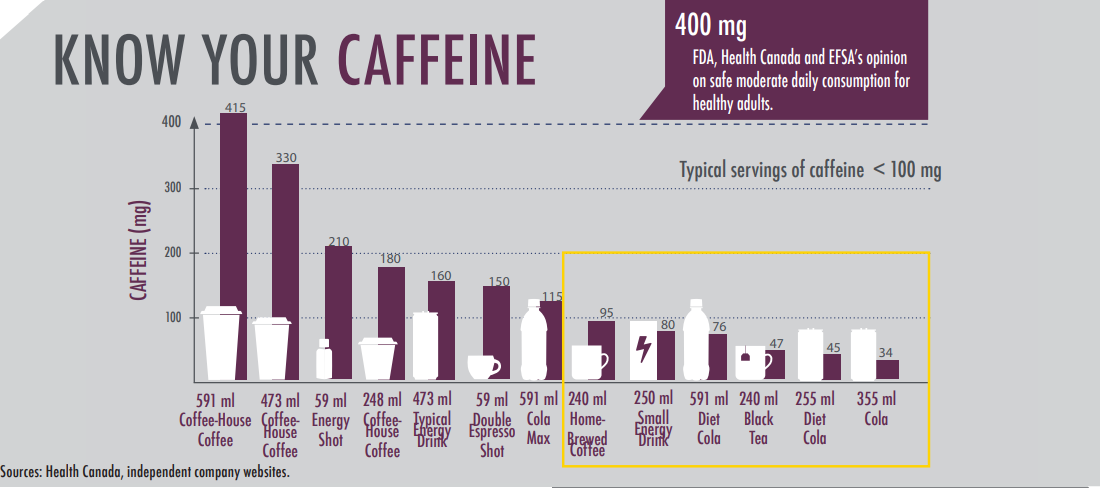
The impacts of too much caffeine on the body
Sometimes our bodies can develop a caffeine tolerance if you consume caffeinated products on a regular basis. This can result in requiring more and more caffeine to achieve the same effects. Some people can even be more sensitive to caffeine (an intolerance) and experience negative side effects easier than others.
Side effects of too much caffeine can include: upset stomach, headaches, twitching and restfulness, nervousness, increased urination, rapid heartbeat, anxiety and insomnia.
If you quit suddenly, you can also experience caffeine withdrawal which includes symptoms like: headaches, insomnia, irritability, fatigue, and increased anxiety. These symptoms may appear 18-24 hours after your last consumption of caffeine and will diminish the longer you go without caffeine in the body.
Additionally, consuming extremely high doses of caffeine (10000mg+) at one time can be extremely dangerous and even fatal. This is seen more with supplements or caffeine pills because they can be purchased in higher doses than you would find in food/drink products like coffee. These situations are rare, but it is still important to be mindful of how much caffeine you are consuming.
Want to lower your caffeine intakes?
Caffeine-containing products, like your favourite Starbucks coffee, can be enjoyed in moderation! However, if you are experiencing negative side effects or you’d like to decrease the amount of caffeine you consume, the safest way to do so is to slowly taper how much you are consuming in a gradual manner. This will help reduce the negative side effects from withdrawal and make the changes more sustainable in the long-term. Why not start off by substituting some caffeinated beverages for decaffeinated options or herbal teas? It is also important to choose water throughout the day when you are thirsty, and avoid caffeinated beverages later in the day if it seems to impact your sleep.
References
Dietitians of Canada. (2018, April 26). Facts on Caffeine. Retrieved from Unlock Food: https://www.unlockfood.ca/en/Articles/Caffeine/Facts-on-Caffeine.aspx
Harvard T.H. Chan School of Public Health. (2020). Caffeine. Retrieved from The Nutrition Source: https://www.hsph.harvard.edu/nutritionsource/caffeine/
Health Canada. (2012, February 16). Caffeine in Food. Retrieved from Health Canada: https://www.canada.ca/en/health-canada/services/food-nutrition/food-saf…
The Centre for Addiction and Mental Health. (2011). Caffeine. Retrieved from The Centre for Addiction and Mental Health : https://www.camh.ca/en/health-info/mental-illness-and-addiction-index/c…

The weather is getting colder, COVID-19 restrictions are increasing across Metro Vancouver, and you may be finding yourself spending more time indoors again. Nothing says cozy, comfort food more than fresh baked cookies! This recipe even has a few healthier additions (like ground flax and chia seeds) to provide you with extra fibre and nutrients. Try out this recipe at home and let us know what you think:
Chewy Ginger Pecan Cookies
Recipe from:UnlockFood.ca
Prep Time: 15-20 minutes
Cook Time: 10-15 minutes
Makes: about 40 cookies
Ingredients
- 1 cup, large flake oats
- 1 cup, whole wheat or white flour
- 2 tbsp., ground flax seeds
- 1 tbsp., hemp hearts
- 1 tbsp., chia seeds
- 1 ½ tbsp., ground ginger
- 1 tsp, salt
- ¾ cup, butter or margarine
- 1 cup, white sugar
- 1 egg
- 1 egg yolk
- ¼ cup, molasses
- 2/3 cup, chopped pecans
- 2/3 cup, sweetened shredded coconut
Instructions
- Preheat oven to 350OF.
- In a medium mixing bowl, combine oats, flour, ground flax, hemp hearts, chia seeds, ginger and salt. Whisk together and set bowl aside.
- In another medium mixing bowl, combine oil and sugar and beat (with a whisk) until fluffy.
- Whisk in the egg and egg yolk, followed by the molasses. Mix until combined.
- Add the flour/oat mixture gradually (1/4 cup at a time) to the liquid mixture.
- When combined, gently mix in the pecans and shredded coconut.
- Roll out heaping tablespoons of cookie dough one at a time, and place on a baking sheet lined with parchment paper. Repeat this until the dough is used!
- Place cookies in oven and bake for 10-15 minutes (or until golden brown and set).
- Enjoy!
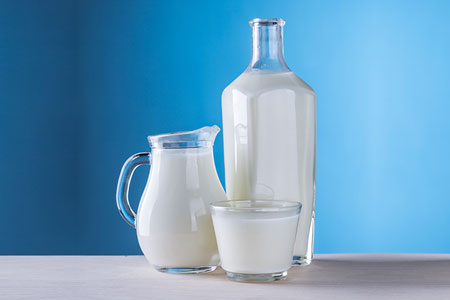
There are many reasons why you may choose to consume milk alternatives. Perhaps you have an allergy to dairy, or maybe you are choosing to consume less animal products. Whatever the reason, it is very important to understand the nutritional differences between the variety of products out there! There are so many different types of milk alternatives, and it can be confusing when trying to determine which product is right for you. From a nutritional standpoint, I like to consider three main components when choosing a milk product or milk alternative:
- Protein content – Milk products are an excellent source of protein, so if you’re making the switch to a milk alternative, it’s a good idea to find a product that provides you with some protein per serving. You won’t find as much protein in milk alternatives as you would in milk products, so remember to make up for this from other protein sources.
- Calcium content – Calcium is an important nutrient to keep an eye out for in your milk or milk alternative products. Calcium is used in our bodies to build healthy bones, and a lack of calcium over time can lead to brittle bones or osteoporosis. Calcium is also important in regulating your heart and making your muscles and nerves work efficiently. Milk is a good source of calcium, and many milk alternatives are enriched or fortified with calcium. To be sure, always check the nutrition facts label on your product.
- Sugar content – Milk naturally contains sugar, but that doesn’t mean that milk is unhealthy for you. However, some milk alternatives, including flavoured or sweetened varieties, often contain extra added sugars to increase the flavour. Don’t forget to check the sugar content per serving in your products on the nutrition facts label.
A tip for when you are comparing nutrition facts labels during your next trip to the grocery store is to look at the percent (%) daily values on the right hand side of the label. I always remember 5% is a little, 15% is a lot. When looking for a product to be a good source of something, like calcium for example, I look for a % daily value of 15% or higher. When looking for a product that is low in a certain nutrient, like sugar, I aim for 5% and below. These percentages are based off an average 2000 calorie diet for a healthy adult and can be found on every nutrition facts label.
Now let’s explore a few different milk and milk alternative products (in relation to their protein, calcium and sugar contents) so you can make your own informed decisions about which product is best for you. Next time you visit the grocery store, why not compare some of your favourite brands and review the percent daily values for each nutrient.
Cow’s Milk (2%) per 1 cup (250mL) serving
- Calories: 129 kcal
- Protein: 8.5 grams
- Calcium: 309 milligrams
- Total Sugars: 13 grams
Goat’s Milk (whole) per 1 cup (250mL) serving
- Calories: 178 kcal
- Protein: 9 grams
- Calcium: 345 milligrams
- Total Sugars: 11.5 grams
Almond Milk (enriched, sweetened, vanilla) per 1 cup (250mL) serving
- Calories: 96 kcal
- Protein: 1 gram
- Calcium: 312 milligrams
- Total Sugars: 16 grams
Soy Milk (enriched) per 1 cup (250mL) serving
- Calories: 110 kcal
- Protein: 7 grams
- Calcium: 316 milligrams
- Total Sugars: 9 grams
Oat Milk (unsweetened) per 1 cup (250mL) serving
- Calories: products vary between 90-130 kcal
- Protein: products vary between 1-4 grams
- Calcium: products vary between 300-450 milligrams
- Total Sugars: 5 grams
There will be variations in the nutrition content of these products between brands, and there are so many other types of milk alternatives that we didn’t even have a chance to highlight in this blog post. That being said, if you want to be sure of what your consuming, always review the nutrition facts labels on your products and/or consult a Registered Dietitian!
Blog post written by KPU Student Health Promotion

Fall is my favorite time of the year. The air gets crisper, the leaves begin to change color, and it’s time to pick your favorite pumpkins at the pumpkin patch! I also get excited for all of the delicious fall produce that becomes available, like sweet potatoes, butternut squash and Brussels sprouts!
The arrival of fall also means it’s almost Thanksgiving, which for some of us is an exciting celebration where you share a delicious meal with family and friends. I know for many of us, these celebrations may look a bit different this year. But that doesn’t mean you can’t try out a new Thanksgiving recipe! Below you will find a yummy recipe that I am planning to try out for Thanksgiving this year. Why not give it a try too, and incorporate a new recipe into your celebration?
Sweet Potato “Unstuffing”
Recipe Adapted from: The Real Food Dietitians
Prep Time: 30 minutes
Cooking Time: 50 minutes
Makes: about 8 servings in a 9x13 baking dish
Ingredients
- 1 sweet potato, peeled and cubed in ½ inch pieces (about 2 cups)
- 1 ½ cups Brussels sprouts, cleaned and cut in half
- 2 carrots, peeled and chopped in ½ inch pieces (about 1 cup)
- 2 pieces of celery, chopped in ½ inch pieces (about 1 cup)
- 1 cup white mushrooms, washed and sliced
- ½ medium sized yellow onion, peeled and chopped in ½ inch pieces
- 4 cloves of garlic
- 1 medium sized apple, peeled, cored and chopped in ½ inch pieces
- 2 tsp of fresh rosemary (about 1 tsp dried)
- 2 tsp of fresh thyme (about 1 tsp dried)
- ½ tsp chili powder
- 1 tsp salt
- 1 tsp pepper
- 3 tbsp. olive oil
- ½ cup dried cranberries
- 1/3 cup pecans or walnuts, chopped
Instructions
- Preheat your oven to 385oF degrees and place a single piece of parchment paper on your baking dish.
- Prepare all of the above ingredients (except the cranberries and nuts) and combine them in a large bowl. Toss with olive oil until everything is combined.
- Transfer everything to your baking dish and cover it with a piece of foil. Bake in the oven for approximately 30 minutes.
- Remove the foil and add the dried cranberries and nuts. Bake for an additional 20-30 minutes or until vegetables are completely cooked through.
- Remove pan from the oven, serve, and enjoy!
Recipe provided by KPU Student Health Promotion. Recipe sourced from The Real Food Dietitians
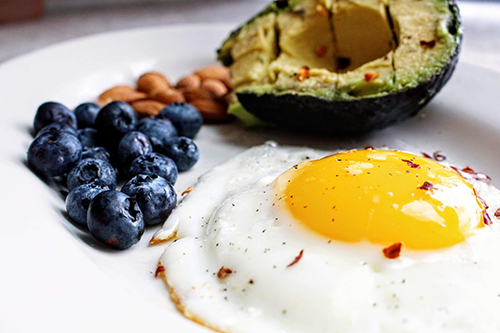
You may have heard about the ketogenic diet before, better known as the “keto diet” or “keto”. Even though keto is the latest diet craze, the diet has actually been around since the 19th century as a method to treat certain conditions like epilepsy in children and diabetes. These days, those who follow the keto diet claim that it is a successful weight loss approach, but does the research support this? Keep reading to review the science behind the ketogenic diet and weight loss.
What is the ketogenic or keto diet?
Following the ketogenic diet consists of consuming high fat, moderate protein and low carbohydrate daily intakes. Generally, a ketogenic diet consists of consuming 70-80% of daily calories from fat, 10-20% from protein and 5-10% from carbohydrates each day. A general healthy diet typically includes between 20-35% of daily calories from fat, 10-35% from protein, and 45-65% coming from carbohydrates.
In the past, the ketogenic diet has been used as a medical treatment for a number of conditions such as epilepsy, cancer, and diabetes. Today, those who follow keto are typically using it as an approach for weight loss.
The biggest aspect of the ketogenic diet is limiting all carbohydrate-rich foods. This includes: breads, pastas, potatoes, rice, starchy vegetables, fruits, and beans/legumes. Those who follow the ketogenic diet typically want to aim for less than 50 grams of total carbohydrates per day. In comparison, 1 cup of rice has about 45 grams of carbohydrates. The ketogenic diet also focuses on consuming high-fat foods, like oily fishes, processed meats, cheeses, and avocado.
How does the “keto” diet work?
In simple terms, the ketogenic diet works by starving the body of glucose (carbohydrates or sugar) in order to burn stored fat for fuel instead. In order to starve the body of glucose, you must refrain from consuming carbohydrate-rich foods. When the body is deprived of carbohydrates for extended periods of time (like 3-4 days for example), hormones that control blood sugar will decrease in the body, and the liver will begin to produce substances called ‘ketone bodies’ from the stored fat. As these ketone bodies collect in the blood, the body goes into a metabolic state of “ketosis”. This is when the body’s primary source of fuel is fat, and hence why it is called the keto diet.
It’s natural for the body to experience ketosis from time to time. However, when following the ketogenic diet, ketones may collect in the body and reach harmful levels, especially if you are not seeking help from physician or registered dietitian. This is called “ketoacidosis “and it can be extremely dangerous and even fatal. The ketogenic diet is not meant to be a long-term lifestyle, and the consequences of your body constantly being a state of starvation has not been fully explored.
What does the research say?
The research has shown that following the ketogenic diet may lead to short-term, positive metabolic changes such as weight loss, improved blood sugar resistance, and improved blood lipid (fat) values. However, there are inconsistent findings throughout the literature, and there are no solid theories to why the ketogenic diet may work for some people. For example, one study theorized that a decrease in appetite stimulating hormones when restricting carbohydrates could be a reason why people find success
Research has also identified that compliance with the diet often declines over time. This makes sense because following the strict rules of keto can be extremely challenging to maintain, like cutting out complete food groups from the diet. Other studies have found that people may even experience symptoms from carbohydrate restriction, such as: fatigue, hunger, irritability, headaches and brain fog. This is sometimes referred to as “keto flu”. Your brain needs carbohydrates to function properly, so no wonder people experience negative side effects when restricting carbohydrates from the body. Carbohydrates are an essential component to a healthy diet.
Additionally, studies have highlighted that people may experience nutritional deficiencies when following the ketogenic diet. The extreme restriction of fruits, vegetables and grains in this diet may cause you to miss out on a variety of vitamins and minerals (Vitamin C, fibre, and B vitamins). Over the counter supplements could provide you with these missing nutrients, but it is always better to get your nutrients from food.
At this time, most of the research studies that investigate the ketogenic diet have small sample sizes, do not compare against control groups, and only investigate short-term outcomes.
Bottom Line
While the ketogenic diet might work for some people in the short-term for weight loss, there is not enough evidence to show its effectiveness and safety in the long-term. It may also be an extremely difficult diet to follow because it is restricting entire food groups and may result in negative side effects. It is always more manageable to set realistic goals for weight loss.
Additionally, carbohydrates are not the bad guy. Carbohydrates are an important part of a balanced diet and should not be viewed as an enemy to weight loss and maintenance! High carbohydrate foods, such as fruits, vegetables and grains, are often the ones that are packed with important vitamins and minerals, and there is a place for all foods even if you want to lose weight.
If you want to explore the ketogenic diet further and get individualized advice, why not reach out to a Registered Dietitian? They can help you meet your nutrition or weight loss goals and make sure you’re doing it in a way that you can maintain and that is safe.
References
Drake, J. (2017, March 21). Ketogenic diet: is going low carb healthy? Retrieved from Healthy Families BC: https://www.healthyfamiliesbc.ca/home/blog/ketogenic-diet-going-low-car…
Gibson, A., Seimon, R., Lee, C., Ayre, J., Frankin, J., Markovic, T., . . . Sainsbury, A. (2015, Jan 1). Do ketogenic diets really suppress appetite? A systematic review and meta-analysis. Obes Rev, 16(1), 64-76.
Government of Canada. (2010). Dietary Reference Intakes Table. Retrieved from Health Canada: https://www.canada.ca/content/dam/hc-sc/migration/hc-sc/fn-an/alt_forma…
Harvard T.H Chan School of Public Health. (2020). Diet Review: Ketogenic Diet for Weight Loss. Retrieved from The Nutrition Source: https://www.hsph.harvard.edu/nutritionsource/healthy-weight/diet-review…
Health Link BC. (2020, July 22). Special Diets for Epilepsy. Retrieved from Health Topics - Health Link BC: https://www.healthlinkbc.ca/health-topics/aa138104
Paoli, A., Rubini, A., Volek, J., & Grimaldi, K. (2013, Aug). Beyond weight loss: a review of the therapeutic uses of very-low-carbohydrate (ketogenic) diets. Eur J Clin Nutr, 67(8), 789-796. doi:10.1038/ejcn.2013.116
Sharpe, A. (2018, Apr 24). The Keto Diet - What this Dietitian actually thinks about a ketogenic diet for weight loss. Retrieved from Abbey Sharpe: https://www.abbeyskitchen.com/the-keto-diet-ketogenic/

It’s hard to believe that summer is almost over and it’s time for many students to go back to school! On any given year, back-to-school time can be a bit hectic. However, this year may be especially stressful and uneasy for many students, parents and teachers. Whether you are going back to school yourself, or you have children at home going back to school, it is important to prepare and eat foods that nourish not only your body, but your mind too! If staying on track while getting back into the school routine is something you are interested in, here are some quick tips from a Registered Dietitian:
Meal Planning and Preparation
When you’ve been in classes (or at work) all day, the last thing you want to do is come home and plan what you’ll cook for dinner and what you’ll have for lunch the next day. If you don’t have anything planned or ready-to-go, you’re more likely to grab something quick or pick up take-out on the way home.
The key is to do your meal planning and preparation on the weekends! In my house, Sunday’s are for planning out our meals and lunches for the week. We don’t always stick to this plan but it is nice to have a general idea of what groceries we have and what we can make with them. For lunches, I typically roast a chicken so we can use it all week in salads, sandwiches, quesadillas, wraps, and pastas. If you are rushed in the mornings, consider planning and prepping your breakfasts as well. A great on the go breakfast that can be prepared ahead of time are egg muffin cups loaded with your favorite veggies!
Organization is Key
If your fridge and cupboards are organized and you know where everything is, it will make staying on track so much easier. I keep ready to eat fruits (sliced strawberries and blueberries), vegetables (sliced cucumber and carrots sticks), yogurt and cheeses in one area of the fridge that is visible to the eye. That way, I know exactly where the “work/school snacks” are located and can grab them quickly and easily. Additionally, if I can see everything in the fridge, I know what ingredients I have to work with to make a meal, and can determine if something is almost empty (instead of right before you need it for a recipe)!
Don’t Skip Breakfast!
There is a reason why they say breakfast is the most important meal of the day. Eating a balanced breakfast is crucial for your wellbeing, especially if you want to focus while you’re at school. Eating a healthy breakfast that contains a combination of complex carbohydrates and protein will provide your body with the energy to concentrate at school and will keep you full until your mid-morning snack! Complex carbohydrates, like whole grains, provide the body and brain with energy and are packed with nutrients like fibre, B vitamins and iron. An example of a healthy, balanced breakfast could include whole grain toast, eggs, and fresh fruit.
These are just a few general tips to get back into a routine with healthy eating after a long summer vacation. If this is something you are interested in, why not try incorporating one of these tips into your daily routine!
Blog post written by KPU Student Health Promotion
This recipe is the perfect alternative to your typical chocolate brownie, and you won't even be able to tell the difference! These fudgy, chocolatey brownies are actually made with pureed black beans, which makes them high in protein and fibre. Check out the black bean brownie recipe provided by KPU Student Health Promotion below.
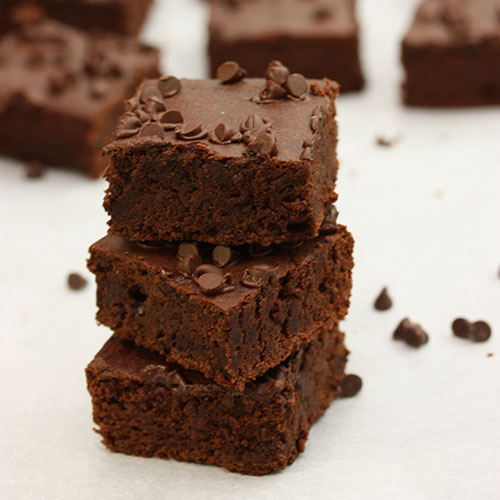
Photo: Meal Makeover Moms
You may have heard the term ‘antioxidant’ before, but what exactly is it? Antioxidants are popular for their suggested health benefits – preventing chronic diseases like cancer, and even eye and skin regeneration. View our PDF below where KPU Student Health Promotion has reviewed the literature to investigate the role that antioxidants can play in your health!
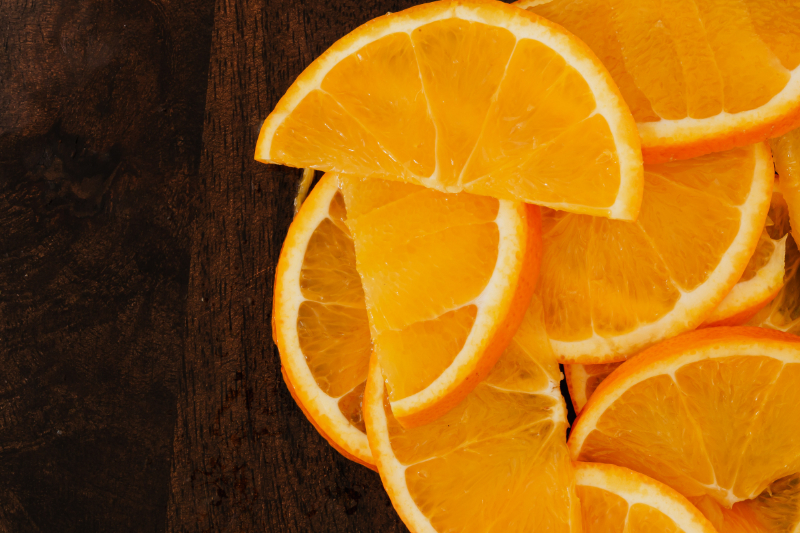
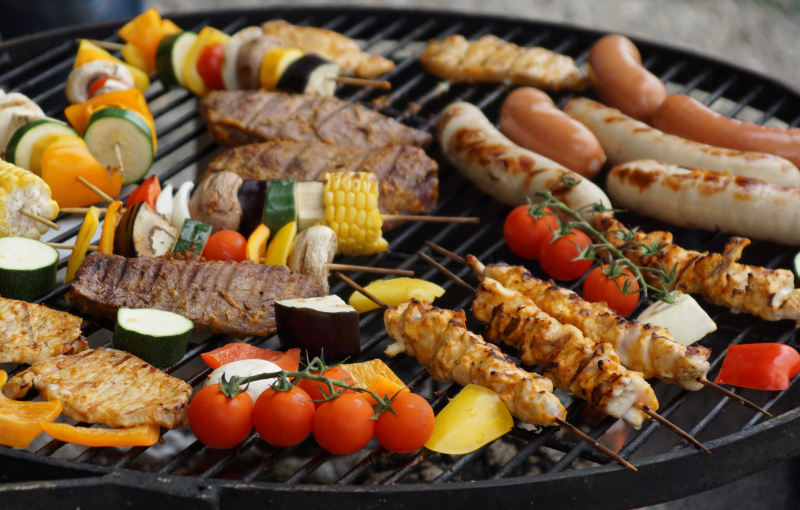
The weather is getting warmer and that means its officially BBQ season! The great thing about the BBQ is that you can cook almost anything on it…grilled vegetables, skewers, homemade burgers, the options are endless! KPU Student Health Promotion has provided you with two yummy BBQ recipes to try out at home.
The best part – both recipes were developed by Registered Dietitians so not only are they tasty, but they are also good for you! If you don’t have a BBQ at home, don’t worry, these recipes can easily be adapted to be cooked in the oven or on the stove.
Intermittent fasting has been around for quite some time, but it has been gaining increasing popularity over the past few years as a flexible approach to dieting. Suggested benefits have included weight loss, increased energy, and improved blood sugars, but are these benefits backed by research?
KPU Student Health Promotion has reviewed the evidence from trusted sources to determine whether the intermittent fasting diet is an effective approach to weight loss. Let’s dive into this popular diet and provide you with the facts to make an informed decision!
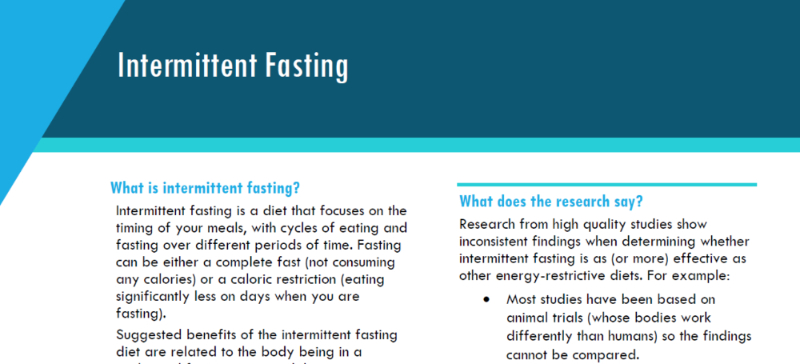
Summer is officially here, which means more fresh and local produce (fruits and veggies) will be available! Farmer’s markets and road-side stands are starting to open, and the options are endless for what you can cook or bake with local fruits and veggies! Not only are they healthy but they are also delicious!
To celebrate Canada Day, why not try out a new recipe that uses local fruits (strawberries, peaches and blueberries) that are grown right here in our backyard? Check out the two recipes below that incorporate local produce and would be a great treat for Canada Day too!

Sunday, June 21st is National Indigenous People’s Day, where we celebrate the many diverse cultures of First Nations, Inuit and Metis people across Canada! We would like to acknowledge and honour the unceded traditional and ancestral lands of the Kwantlen, Musqueam, Katzie, Semiahmoo, Tsawwassen, Qayqayt and Kwikwetlem peoples, on whose territories KPU campuses’ stand.
To honour this important occasion, KPU Student Health Promotion wanted to share a research study conducted by Megan Matthews (KPU’s Student Health Promotion Coordinator) as part of her Master’s in 2018. Megan’s research explores the topic of Indigenous food sovereignty and how a land-based Summer Institute that was held in Mi’kma’ki (the traditional and unceded lands of the Mi’kmaq) educated participants about the relationship between land, food and overall health and wellbeing.
This week, KPU Student Health Promotion explores the fad of protein! How much protein do our bodies actually need? Are we consuming too much? Do athletes need to consume more? We have reviewed the literature to provide you with evidence-based information about what you need to know about protein!

Check out this video created by Student Health Promotion showing you how to make a delicious and easy pasta marinara sauce. Follow along with the video and download the recipe to make this at home!
It’s getting warmer outside, and you may be finding yourself going for more walks in your neighborhood or even going for hikes at your favorite local trail. When we engage in any type of physical activity, it is very important to think about how we will keep our bodies well hydrated.
As we exercise, we lose electrolytes and fluids in our sweat, especially if we are being active outside where it is warm and humid, so it is key to consider how much water we should be consuming. Check out this handout created by Student Health Promotion that focuses on hydration!
- We have reviewed the literature for you to provide accurate information so you can make informed decision about your health and nutrition!
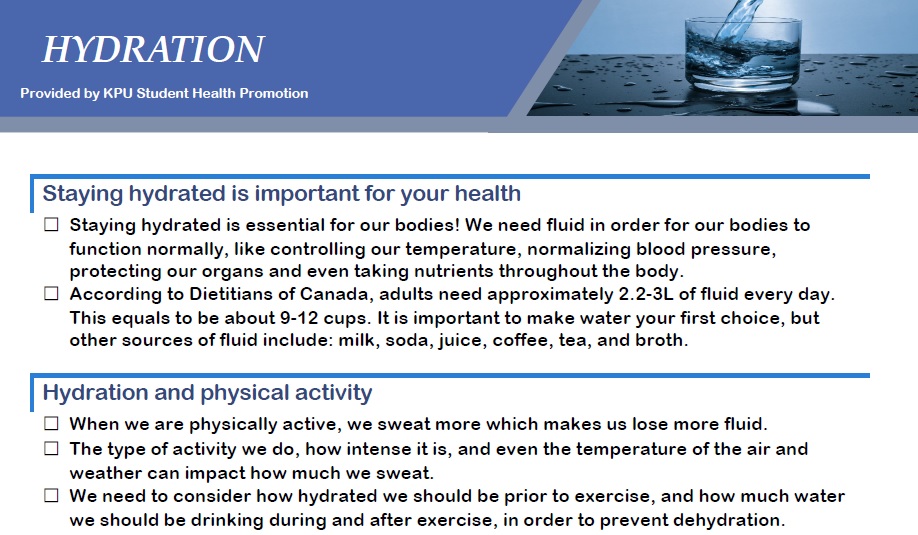
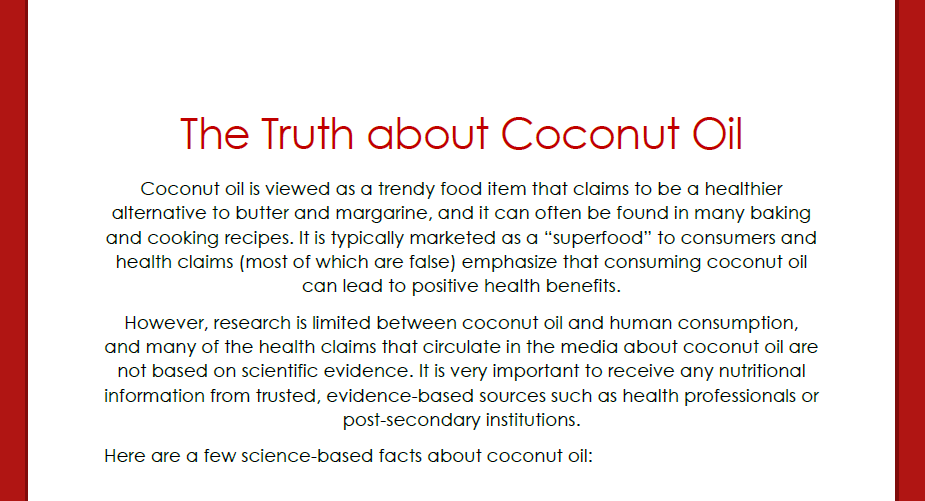
In this week’s nutrition article, KPU Student Health Promotion is providing a science-based examination into the craze of coconut oil! Coconut oil is often marketed to consumers as a “superfood” that will provide you with various positive health benefits, but are these claims based in scientific evidence?
We have reviewed the literature for you to provide accurate information so you can make informed decision about your health and nutrition!
There are a number of ways that gardening can benefit your overall health, especially in its ability to provide us with healthy fruits and vegetables to nourish our bodies!
Check out the following document created by KPU Student Health Promotion that provides a few examples of easy fruits and veggies to grow at home, as well as an easy and delicious recipe!
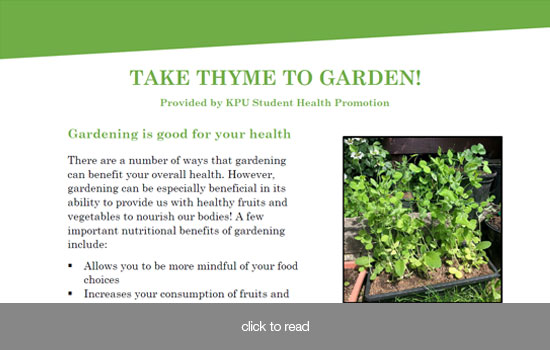
Did you know that sugary drinks (like soft drinks, juices, energy drinks and sports drinks) are the biggest contributor to added sugar in our diets?
While these drinks may taste delicious, you may want to re-think your drink! Excessive sugar consumption can be associated with several negative health effects, and sugary drinks usually contain high amounts of added sugar.
Watch the video to see just how many teaspoons of sugar are in several common sugary drinks. A key thing to know is that there are approximately 4 grams of sugar in every teaspoon!
Remember to make water your number one choice when you are thirsty. Water keeps you hydrated and is important for your overall health!
The topic of mindful eating has been gaining quite a bit of popularity as a way to change eating behaviours free from diets and restrictions. There is no singular term that can define mindful eating, but it includes focusing on being present while you’re eating and acknowledging the way food makes you and your body feel.
Research even shows that mindful eating may improve self-esteem, self-empowerment, and contribute to weight loss. Check out the following document created by Student Health Promotion that provides you with a brief introduction to mindful eating and a few helpful resources to learn more!
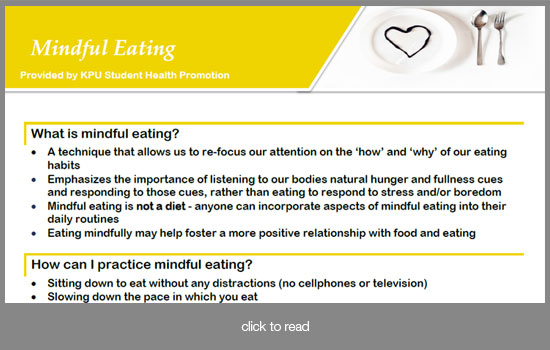
You asked, and we answered! This week’s nutrition article focuses on 5 healthy snack ideas that you can easily add into your daily meal routine. To have your questions answered, please submit them to sportrec@kpu.ca or keep an eye out on the Sport and Rec Instagram page.
Many of us are finding it difficult to eat healthy during this time, and we also have to be mindful of how often we are going out in public, including trips to the grocery stores. That is why it is so important to plan ahead before you pick up your weekly groceries. To help with this, we have created a grocery list for one week that provides examples of healthy options you can purchase with a limited budget in mind. We have also included two recipes that you can make with the ingredients on the list.
Smoothie Recipes (click): 04/10/2020
1. Mango Strawberry Smoothie
Recipe from: Dairy Farmers of Canada
Serving Size: 2
Prep Time: 5 mins
Ingredients:
• 1 cup frozen, chopped mango
• ½ cup frozen, sliced strawberries
• 2 tbsp. chia seeds, hemp seeds or ground flax seeds
• 1 cup milk (or non-dairy alternative)
• ½ cup plain, Greek yogurt
• 1 ½ tsp. honey
• 1 tsp. vanilla extract
Instructions:
1. Place all ingredients into a blender.
2. Blend until smooth.
3. Serve and Enjoy!
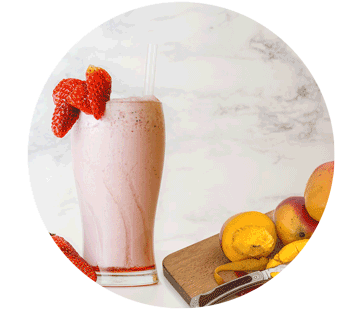
2. Go-To Green Smoothie
Recipe from: The Real Food Dietitians
Serving Size: 2
Prep Time: 5 mins
Ingredients:
• 1-1/2 cups ice
• 1 medium banana, fresh or frozen (or sub for 1 cup of any fruit)
• 2 handfuls of spinach
• ½ avocado
• 1 ½ - 2 cups milk or non-dairy alternative
• 2 scoops of protein powder of choice
Instructions:
1. Place all ingredients into a blender
2. Blend until smooth
3. Serve and enjoy!
3. Chocolate Peanut Butter Smoothie
Recipe from: Desiree Nielsen, Registered Dietitian
Serving Size: 1
Prep Time: 5 mins
Ingredients:
• 1 ripe banana
• 1 cup milk or non-dairy alternative
• 2 tbsp. hemp seeds
• 1 heaping tbsp. peanut butter
• 1 tbsp. unsweetened cocoa
• ¼ tsp cinnamon
Instructions:
1. Place all ingredients into a blender
2. Blend until smooth
3. Serve and enjoy!
